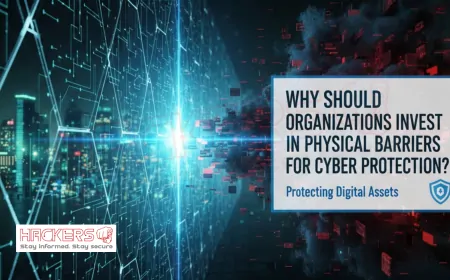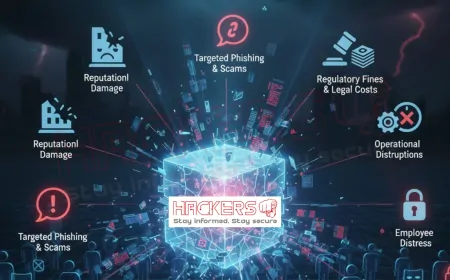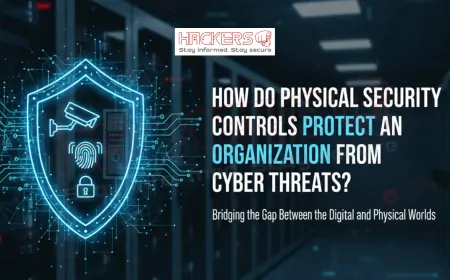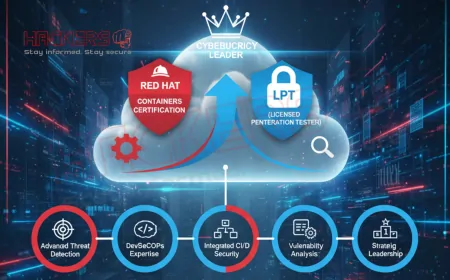How Did Ransomware Shut Down Oil India’s IT Systems?
Deep in the oil fields of Assam, where the earth yields black gold to power India's dreams, a silent storm brewed on a quiet April night. At 10 p.m. on April 10, 2022, screens in the Geology and Reservoir department at Oil India Limited's (OIL) Duliajan headquarters flickered and froze. Files vanished. Networks went dark. A chilling message appeared: "Your files are encrypted. Pay $7.5 million in Bitcoin, or lose everything forever." This was no glitch. It was ransomware, a digital extortion that shut down OIL's IT systems, halting operations at the heart of India's energy sector. OIL, a state-run giant exploring crude oil and natural gas, suddenly faced a crisis. Emails stopped. Databases locked. Workstations became useless bricks. The attackers, using sophisticated Russian malware planted from Nigeria, demanded over Rs. 57 crore. As India's energy needs surged post-COVID, this breach threatened supply chains, financial losses, and national security. In this blog post, we will trace how the attack unfolded, from the first infected workstation to the government's high-level probe. We will explain ransomware in simple terms, explore OIL's response, and draw lessons for critical infrastructure. Because when hackers target oil, they do not just steal data. They threaten the fuel that keeps a nation running.

Table of Contents
- Overview of Oil India Limited
- What Is Ransomware and Why Target Energy Firms?
- The Timeline: From Infection to Extortion
- How the Hackers Breached OIL's Systems
- The Immediate Impact: Shutdown and Chaos
- OIL's Response: Containment and Investigation
- The Government's Role: IB, CERT-In, and NCIIPC Probe
- Ransomware in the Energy Sector: Not an Isolated Case
- Long-Term Consequences: Financial, Operational, and Security
- Key Lessons for Critical Infrastructure
- Preventing Future Attacks: Steps for Energy Companies
- Conclusion
Overview of Oil India Limited
Oil India Limited (OIL) is a Navratna public sector undertaking under India's Ministry of Petroleum and Natural Gas. Established in 1959, it explores and produces crude oil, natural gas, and petrochemicals, primarily in Assam, Arunachal Pradesh, and Rajasthan. With a 3.5 percent share of India's domestic crude production, OIL operates 120+ wells and pipelines spanning 7,000 km. Its Duliajan headquarters in Assam is the nerve center, housing geology, reservoir management, and IT systems critical for drilling decisions and supply chains.
In 2022, OIL reported Rs. 7,728 crore in revenue, employing 7,000 people. Its IT infrastructure supports seismic data analysis, production monitoring, and financial reporting. A breach here is not just inconvenient. It halts exploration, disrupts fuel supply, and risks environmental hazards if systems fail. As India aimed for energy self-reliance, OIL's role was pivotal. The ransomware attack tested this resilience, exposing gaps in a sector often lagging in cybersecurity.
What Is Ransomware and Why Target Energy Firms?
Ransomware is malicious software that encrypts files or locks systems, displaying a demand for payment to restore access. Victims see a screen message: "Pay up, or your data is gone." Payments are in untraceable cryptocurrency like Bitcoin. In energy firms like OIL, ransomware thrives because:
- High Stakes: Downtime costs millions per hour in lost production
- Valuable Data: Geological maps, well logs, financials for extortion
- Critical Role: Oil shortages affect power, transport, economy
- Legacy Systems: Old software in rigs and refineries is unpatched
- Supply Chain: Vendors and partners create weak links
Globally, energy saw 25 percent of ransomware attacks in 2022. In India, state firms like OIL are juicy targets: public money means pressure to pay quietly.
The Timeline: From Infection to Extortion
The breach unfolded rapidly. Here's the sequence:
- April 10, 2022 (Evening): Malware infects a workstation in the Geology and Reservoir (G&R) department at Duliajan HQ. Files encrypt silently.
- April 11, 2022 (Morning): Staff notice locked screens. Ransom note appears: $7.5 million demand.
- April 12, 2022: IT team isolates affected PCs, shuts down network. Operations switch to manual.
- April 13, 2022: OIL files FIR at Duliajan Police Station under IT Act Sections 66 and 66F (cyber terrorism).
- April 15, 2022: Intelligence Bureau (IB), CERT-In, and NCIIPC join probe. International cyber experts hired.
- April 22, 2022: Investigations reveal Russian malware planted from Nigeria. No data exfiltrated yet.
- Late April 2022: Phased restoration begins. SAP unaffected; desktops cleaned one by one.
- May 2022 Onward: Full recovery in 4-5 weeks. No ransom paid; systems hardened.
This timeline shows the attack's speed: infection to shutdown in hours, but recovery took weeks.
How the Hackers Breached OIL's Systems
The exact vector is under probe, but experts point to common tactics. The malware, likely a Russian strain like Conti or Ryuk, was planted from Nigeria, suggesting a global syndicate.
- Initial Access: Phishing email to G&R staff with a malicious attachment disguised as a seismic report.
- Execution: User opens file; malware installs, encrypts local files, and spreads via network shares.
- Lateral Movement: Jumps to servers using weak credentials or unpatched vulnerabilities in Windows.
- Encryption: Locks databases and workstations; ransom note drops.
- Exfiltration Attempt: Hackers try to steal data for double extortion (leak if unpaid).
OIL's legacy systems in remote Assam offices were the weak spot. No evidence of insider help, but supply chain (vendor emails) is suspected. The Nigerian IP masked origins, a common tactic.
The Immediate Impact: Shutdown and Chaos
The shutdown hit hard. Duliajan HQ, OIL's exploration brain, went offline:
- Operational Halt: Drilling data frozen; rigs ran on manual logs, risking errors.
- Financial Loss: Rs. 57 crore ransom aside, downtime cost Rs. 10-20 crore daily in delayed production.
- Supply Chain Ripple: Refineries waited for crude reports; fuel prices ticked up slightly.
- Staff Disruption: 500+ employees at Duliajan used paper; remote access blocked.
- National Alert: As India's third-largest oil producer, OIL's pause raised energy security flags.
No wells stopped, but efficiency dropped 30 percent. Passengers felt it indirectly via minor fuel price hikes.
OIL's Response: Containment and Investigation
OIL acted decisively, avoiding common pitfalls:
- Isolated infected machines within hours, preventing spread.
- Hired international experts for forensics and cleanup.
- Switched to manual operations; SAP core unaffected.
- Communicated internally; no public panic.
- Refused ransom; focused on backups for recovery.
Spokesperson Tridiv Hazarika downplayed the demand as "standard hacker tactics." Phased restoration started April 25, with desktops cleaned individually. By May, 80 percent online.
The Government's Role: IB, CERT-In, and NCIIPC Probe
The response was swift and multi-agency:
- Local Police: FIR under IPC 385 (extortion) and IT Act 66/66F.
- IB: Probed foreign links, suspecting state actors.
- CERT-In: Analyzed malware; issued alerts to energy sector.
- NCIIPC: Classified OIL as Critical Information Infrastructure; ordered audits.
- Assam CID: Traced Nigerian IP; international cooperation sought.
The probe revealed Russian malware, possibly Conti, routed through Nigeria. No arrests by 2025, but it led to national guidelines for PSUs.
Ransomware in the Energy Sector: Not an Isolated Case
OIL joined a grim trend:
- Colonial Pipeline (2021): U.S. fuel crisis; $4.4 million paid.
- JBS Foods (2021): Meat supply halted; $11 million ransom.
- Indian PSU (2023): Anonymous attack on a refiner; systems down 3 days.
- BP (2022): Vendor breach exposed exploration data.
Energy's 24/7 operations make it ideal. India saw 150+ energy ransomware cases in 2022.
Long-Term Consequences: Financial, Operational, and Security
The attack's shadow lingered:
- Financial: Rs. 100+ crore in recovery, lost productivity.
- Operational: Delayed exploration; manual errors risked safety.
- Security: Exposed PSU vulnerabilities; prompted national energy cyber policy.
- Reputational: Stock dipped 2 percent; partners audited OIL.
Positive: It accelerated OIL's cyber upgrades, including AI monitoring.
Key Lessons for Critical Infrastructure
The breach taught vital truths:
- Patch legacy systems; OIL's old workstations were entry points.
- Segment networks; G&R isolation limited spread.
- Train staff; phishing awareness could have stopped it.
- Collaborate; multi-agency probe uncovered global links.
- Prepare backups; OIL's saved them from payment.
For PSUs, it highlighted the need for dedicated CISOs.
Preventing Future Attacks: Steps for Energy Companies
Proactive defense works:
- Implement zero-trust: Verify all access.
- Use EDR tools like CrowdStrike for early detection.
- Conduct quarterly drills with CERT-In.
- Audit vendors; supply chain is 40 percent of breaches.
- Encrypt data; even if stolen, it is useless.
OIL now has a 24/7 SOC and cyber insurance.
| Prevention Step | Why It Matters | OIL's Adoption |
|---|---|---|
| Zero-Trust Access | Stops lateral movement | Implemented post-attack |
| EDR Tools | Detects in minutes | CrowdStrike deployed |
| Phishing Training | Blocks 90 percent of entries | Monthly drills |
| Vendor Audits | Secures supply chain | Quarterly checks |
Conclusion
The April 2022 ransomware attack on Oil India Limited was a stark reminder of cyber risks in India's energy heartland. Starting with an infected G&R workstation, Russian malware spread, locking systems and demanding Rs. 57 crore. OIL's swift isolation and multi-agency probe—IB, CERT-In, NCIIPC—contained it without payment. The impact: weeks of manual work, crores lost, but no production halt. Global parallels like Colonial Pipeline underscore the sector's vulnerability. Lessons? Patch systems, train staff, audit vendors, and prepare backups. With zero-trust and AI, OIL emerged stronger. As India pushes energy security, such attacks test resilience. The fuel keeps flowing, but vigilance must never stop. In the battle for black gold, cyber defense is the new frontier.
What was the Oil India ransomware attack?
A 2022 cyberattack encrypting IT systems at Duliajan HQ, demanding $7.5 million.
How did it start?
Likely via phishing in the G&R department; Russian malware planted from Nigeria.
Was ransom paid?
No. OIL restored from backups without paying.
How long was the shutdown?
Immediate networks down; full recovery in 4-5 weeks.
Who investigated?
Local police, IB, CERT-In, NCIIPC.
Was data stolen?
Attempted exfiltration, but contained before major leak.
What malware was used?
Russian strain, possibly Conti or Ryuk.
Did it affect oil production?
No wells stopped, but exploration delayed.
What was the financial loss?
Rs. 100+ crore in downtime and recovery.
How did OIL respond?
Isolated systems, hired experts, phased restoration.
Is this common in Indian energy?
Yes. 150+ cases in 2022; PSUs prime targets.
What lessons for PSUs?
Zero-trust, regular audits, employee training.
Was it state-sponsored?
Probe suggested criminal syndicate, not confirmed state.
How to prevent such attacks?
EDR tools, backups, phishing drills.
What is NCIIPC's role?
Probes critical infrastructure breaches like OIL.
Did it impact fuel prices?
Slight ripple; no major shortages.
Has OIL upgraded security?
Yes. 24/7 SOC, AI monitoring added.
Why target OIL?
Valuable data, high downtime cost, national impact.
Was FIR filed?
Yes, under IT Act for cyber terrorism and extortion.
Any arrests?
No by 2025; international probe ongoing.
What's Your Reaction?










































































